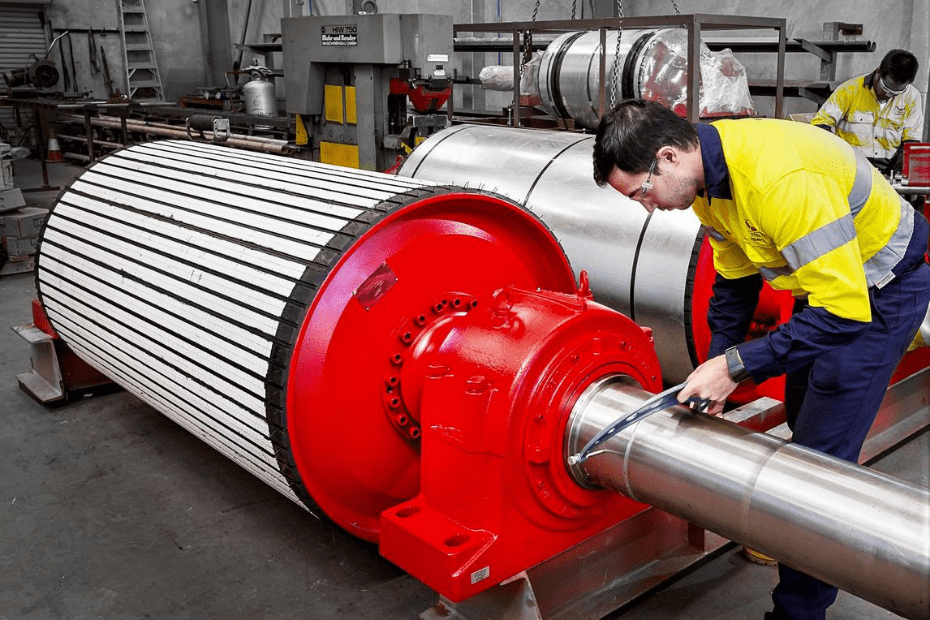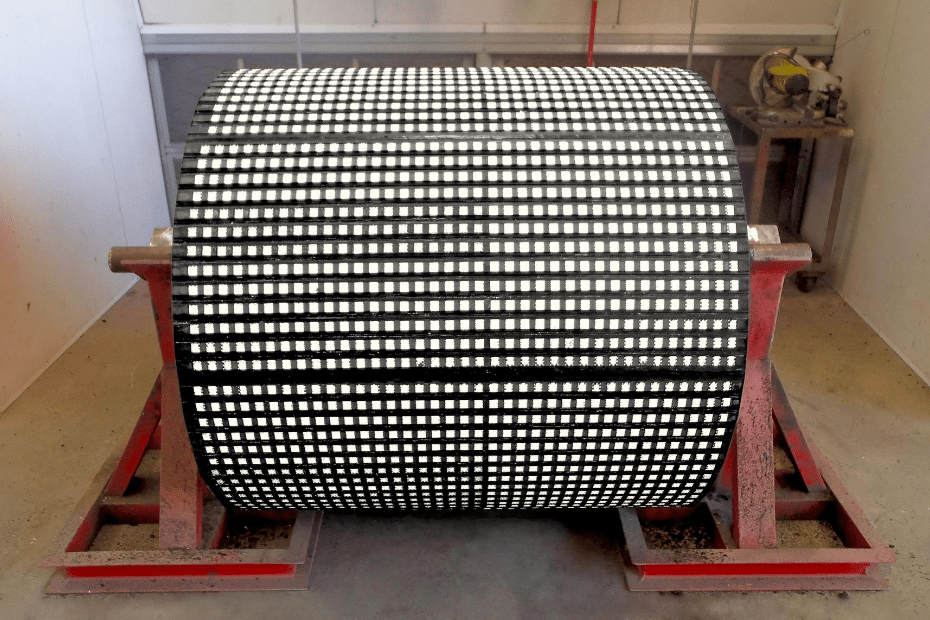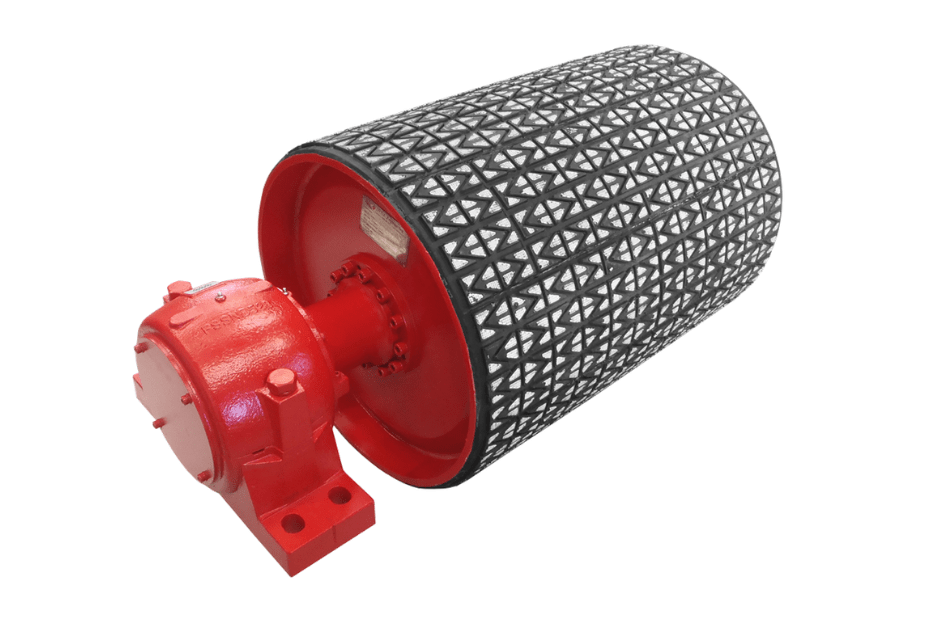
Pulley Lagging - What Are My Options?
Pulley lagging is the layer of material which is bonded to the shell of a conveyor pulley. Its function is to protect the shell from damage, increase friction with the conveyor belt and dispense water off the pulley.
There are several different types of pulley lagging, such as plain rubber, grooved rubber and ceramic lagging. Each type of pulley lagging has different variations, specifications and are used for a variety of purposes.
Rubber Lagging
Rubber is the most common type of pulley lagging. It is a relatively ‘soft’ material which offers good traction and is resilient to wear. Other functions include protection for the pulley shell and increased friction for conveyor belts.

There are many options when considering rubber lagging. It can be grooved and shaped to offer greater flexibility depending on your application.
Another added benefit of rubber is its one of the most affordable types of pulley lagging.
Rubber lagging is a versatile product. Depending on your application, different properties such as thickness and hardness can be utilised to achieve your outcomes. Rubber lagging can also be grooved into just about any shape or pattern.
One of the challenges with rubber lagging is that the operational life is limited and must be replaced routinely. Belt slippage can still occur even though rubber lagging increases friction to the conveyor belt.
Rubber lagging is not the most optimal pulley lagging product to achieve high levels of friction.
Plain Rubber vs Diamond Grooved Rubber Lagging
Plain rubber lagging is generally used on non-drive pulleys. This variation offers greater traction for the conveyor belt without excessively increasing friction which could cause the belt to wear faster.
Another rubber lagging product is diamond grooved rubber lagging. Grooved rubber lagging is generally applied to pulleys which require more fiction to the conveyor belt. The diamond grooves are more flexible when compared to plain rubber.
The gaps in the rubber allows the lagging extra room to bend and move with the conveyor belt. The added flexibility allows the rubber to keep contact with the same section of conveyor belt and helps reduce belt slippage. Another advantage to diamond grooved rubber lagging is it sheds water off the pulley to further assist with belt slippage and material build up.
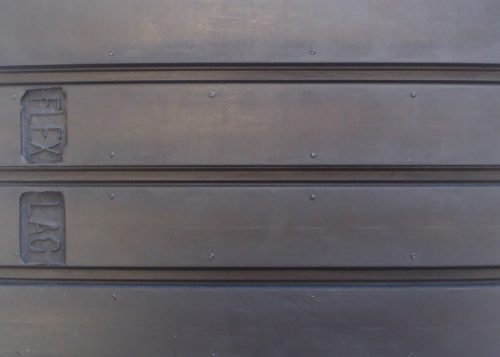
Plain rubber lagging
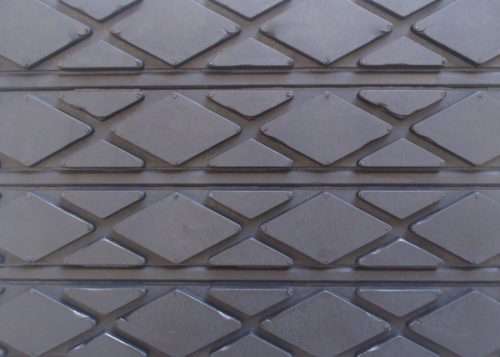
Diamond grooved rubber lagging
Ceramic Lagging
Another common type of pulley lagging is ceramic. Ceramic is used because it is a more hardy and durable material than rubber. Harsh conditions and abrasive material are the two usual reasons why ceramic lagging is considered.
The most common types of ceramic lagging are ‘smooth’ and ‘dimple’. Both of these products offer a significant increase in friction, grip and tracking of the belt and elimination or reduction of belt slippage.
 Ceramic lagging is a more expensive option than rubber lagging however ceramic lagging has a greater service life and reduces lagging wear.
Ceramic lagging is a more expensive option than rubber lagging however ceramic lagging has a greater service life and reduces lagging wear.
Drive pulleys are usually lagged with dimple ceramic lagging because the increased fiction and grip assists in driving the conveyor belt. The coverage of ceramic on the surface of the lagging can be customised depending on your application and is used to increase or decrease friction and grip.
It can also be used to increase wear resistance depending on your needs and budget.
Non-drive pulleys can be lagged with smooth ceramic lagging. This is less common than drive pulleys as ceramic lagging is more expensive than rubber lagging and is only used when necessary.
Ceramic lagging can be applied to the pulley shell as a rubber backed ceramic strip or sheet. The rubber backing is bonded to the pulley shell. The other method is to directly bond the ceramic tiles to the pulley shell.
There are a few issues with ceramic lagging. Ceramic can be fragile and prone to cracking. Falling material and hard objects caught between the lagging and belt are the usual cause of this issue. Further, conveyor design, transition distances and drive traction should all be carefully considered when selecting ceramic lagging.
Smooth Ceramic vs Dimple Ceramic Lagging
One of the reasons to use dimple ceramic lagging is that the dimples add significantly more friction and grip for the belt when compared to smooth ceramic lagging and rubber lagging. The dimples will press into the conveyor belt and help to drag it.
There is a major consideration when using dimple ceramic lagging. If there is any belt slippage present, the dimples will claw the back side of the belt. Clawing of the belt will greatly decrease the belt life because the rubber will be consistently scratched off. Conveyor belts are significantly more expensive than lagging and as such belt slippage should be minimised by choosing the correct lagging for your application.
Smooth ceramic lagging offers a good middle ground between rubber lagging and dimple ceramic lagging. All the general benefits of ceramic are offered by smooth ceramic lagging as well as minimising the issue of the conveyor belt clawing that dimple ceramic lagging can display.
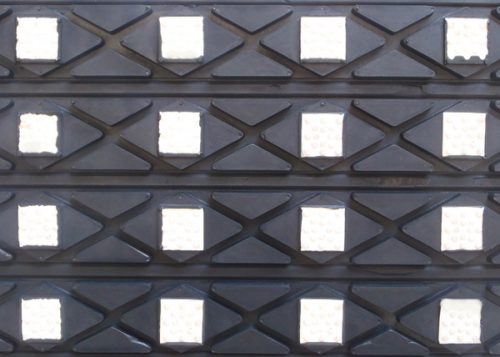
Smooth ceramic lagging
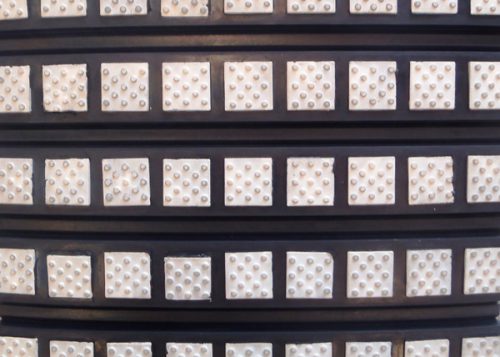
Dimple ceramic lagging
Other Lagging Options
Another type of pulley lagging is polyurethane or plastic lagging. Polyurethane lagging can be applied as a sheet or strip. The method of bonding is usually rubber backed polyurethane or cast the polyurethane directly on to the pulley shell. Although not as common as rubber and ceramic, polyurethane lagging is gaining popularity in some applications and can provide good service life. Cast polyurethane lagging can be very expensive to apply and extremely difficult to remove for repair, thus its generally only used when rubber and ceramic lagging has proved less serviceable.
A less common option is to leave the pulley shell bare and apply no lagging. This option offers the lowest friction because the conveyor belt is in direct contact with the pulley shell. The disadvantage of not utilising any lagging is that the pulley shell has no protection to wear and will often result in total replacement of the pulley shell.
Which Pulley Lagging Should I Use?
Pulley lagging is very dependent on the application and conveyor design. Operating conditions, product abrasion, the type of pulley, the belt run speed and tension are important to know when selecting which type of pulley lagging to use.
Related Blog Posts
Why to Use Ceramic Lagging
Ceramic lagging is one of the most commonly used types of lagging applied to conveyor pulleys. It is often used in harsh conditions where abrasive material is conveyed because the ceramic…
4 Things to Know About Lagging
When it comes to pulley lagging, the range of products and specifications are incredibly diverse. This is to reflect the great diversity in conditions present at mining operations all over the world…
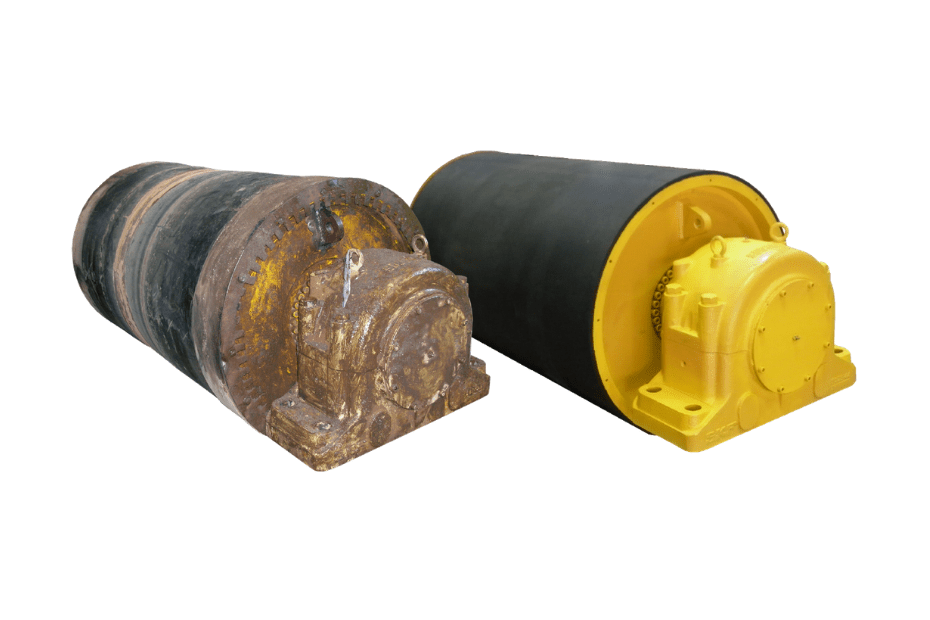
Does Your Pulley Need Refurbishing?
Pulleys are a heavy-duty, consistently running piece of machinery that are essential components of a conveyor system. Although they are designed to last, after many years of constant use…
